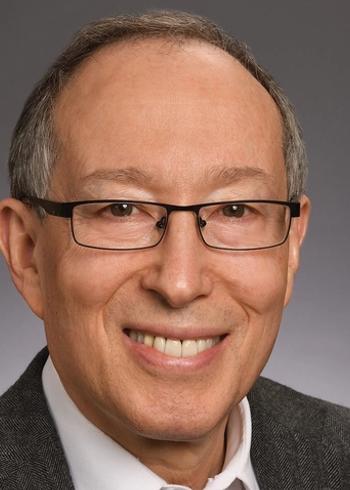
Rebuttal: Congress, not the AANP, can resolve the physician shortage
Members of Physicians for Patient Protection respond to claims made by the American Association of Nurse Practitioners.
We read with fascination the
Nurse practitioners will fill the primary care gap.
Kapu states that 90% of NPs are “prepared in primary care,” but government data show that just 52% of NPs practiced primary care in 2010,[1] with the number of nurse practitioners entering primary care declining 40% since 2004.[1]A 2020 Oregon Center for Nursing workforce report stated that, “careful analysis of multiple factors suggests only 25 percent of Oregon’s NP workforce are practicing in primary care.”[ii]
There is also concern about the quality of NP education, with master’s level degrees requiring as little as three unstandardized months shadowing MDs, DOs, or NPs at whatever clinical sites students can secure. Doctoral-level NP clinical rigor is often even less: 85% of doctoral-level NP training programs are non-clinical.[iii]
Full practice authority (FPA) strengthens patients’ access to high-quality care.
The simple truth: there is no scientific evidence that non-physicians can practice safely and effectively without physician supervision. The most complete meta-analysis of nurse practitioner care, the Cochrane Collaborative (Nurses as Substitutes for Doctors in Primary Care 2018), found only eighteen studies out of 8,885 screened studies that were of adequate quality to analyze.[iv] Of these, only three were performed in the United States, with the most recent published over 20 years ago, and every single study in the Cochrane review involved nurses working under some degree of physician supervision.Further, these studies were of short length, averaging just 14 months, excluded high-risk patients, and did not evaluate patients with complex or undifferentiated conditions.
Despite the fact that NPs are permitted to practice independently in nearly half the states of the Union, there remain no high-quality studies on patient outcomes comparing unsupervised nurse practitioners to physicians.(One such study may soon be published: earlier this month at the Anesthesiology 2021 annual meeting, data was presented showing a 50% decrease in cardiac arrest and 27% less chance of death following a hospital wide transition from a nurse-only to a physician-led rapid response team.[v])
Fifty years of research confirms the high quality of NP-delivered health care.
Research does show that NPs can and do provide high-quality care—but only when working closely with physicians. Further research raises concerns about an overuse of health care resources by non-physician practitioners.[vi] Studies show that nurse practitioners order more lab tests[vii] and radiographic tests[viii] than physicians, prescribe more medications including opioids, inappropriate antibiotics, steroids, and antipsychotics than physicians,[ix] place twice as many inappropriate referrals than physicians,[x] and perform more unnecessary biopsies than physicians.[xi]
With the rise of online training, diploma mills with 100% acceptance rates, and direct-to-NP programs that eliminate the requirement for nursing experience, there are concerns that quality of NPs may decline further. In fact, a 2017 survey published in Worldviews Evidence Based Nursing, found that nurse practitioners overwhelmingly expressed concerns about competency in evidence-based practice.[xii]
Rural communities need help – and NPs are prepared to deliver it.
While NPs promise increased access to rural residents,
Trusted health policy advisors agree: It’s time to enact FPA nationwide.
We believe health policy advisors who advocate for FPA for NPs as a remedy for the physician shortage may want to first examine a staffing shortage within nursing itself: the shortage of bedside nurses.Bedside nursing is indispensable, yet the NP role has siphoned many nurses away from the bedside without a plan to resupply the nation’s need, especially during the COVID19 health crisis.[xvi] This has left a deficit of 80,000 bedside nurses.
As physicians who love our patients, our nursing colleagues, and the practice of medicine, we found it especially painful to read the last section of Kapu’s response in which she states that physicians are constraining nurses to “protect their privileges, independence, and income.” We can say on behalf of the 12,500 physicians affiliated with Physicians for Patient Protection that our sole mission is to ensure access to physician-led care for all patients and truth and transparency of health care credentials. The only constraints we wish to see are state legislatures and boards of Medicine disallowing individuals without medical training from practicing medicine.
Unlike Kapu, we do not view the fields of Medicine and Nursing as interchangeable. Both professions are valuable in providing the care that patients need, but the content of the care is qualitatively different. This fact does not elevate one profession above another, but rather acknowledges their complementary contributions to health care.
Regarding a call to ‘break the glass ceiling,’ we point out that there is no such ceiling. Any woman or man who wants to practice medicine can go to medical school if they desire to practice medicine—and many of the members of PPP who were previously nurse practitioners or other allied professionals have done just that. However, we also believe that if a nurse desires to practice nursing – whether as an RN or as an APRN – that, too, is a wonderful profession. We fail to see how keeping physicians on health care teams constrains APRN’s abilities to practice to the full extent of their skills and training.
In summary: Congress alone can fix the physician shortage.
In the U.S. today, there are more than 10,000 unmatched medical school graduates who are unable to practice as physicians because of a lack of residency positions. While medical schools have increased enrollment by approximately 30% since 2002, residency slots have remained flat since 1997 due to a cap in payment support from the government.[xvii]Reps. Terri Sewell (D-Ala.), John Katko (R-N.Y.), Thomas Suozzi (D-N.Y.), and Rodney Davis (R-Ill.) introduced the Resident Physician Shortage Reduction Act of 2021 to add 2,000 residency positions per year for the next seven years.
The answer to our physician shortage is not replacing physicians with NPs, such as Kapu and the AANP propose, but by releasing an unprecedented hiring freeze that has been in place for nearly 25 years. Rather than relying upon extraordinary solutions to a very simple problem, we suggest that the Senate and the House pass the Resident Physician Shortage Reduction Act of 2021 immediately. The remedy to the physician shortage cannot wait.
Sources:
[xvi] Auerbach DI, Buerhaus PI, Staiger DO. Implications of The Rapid Growth of The Nurse Practitioner Workforce in the US. Health Aff (Millwood). 2020;39(2):273‐279. doi:10.1377/hlthaff.2019.00686
Newsletter
Stay informed and empowered with Medical Economics enewsletter, delivering expert insights, financial strategies, practice management tips and technology trends — tailored for today’s physicians.














